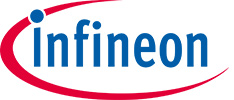World of IoT 
IoT in Security & Public Safety
Surveillance
Application Types (click for more details)ICT Security
Application Types (click for more details)Emergency Services
Application Types (click for more details)Environment
Application Types (click for more details)Surveillance
IoT technology is used in surveillance to reduce security incidents. IoT enables remote monitoring of homes, businesses, facilities, and public spaces in real-time. Networked cameras and IoT devices can detect theft, violence, vandalism, and fire to alert authorities.
Radar/Satellite
IoT applications for radar and satellite surveillance include asset monitoring, monitoring civil engineering projects, tracking cattle and monitoring crop yields, healthcare services in remote communities and monitoring shipping containers.
Fixed & Worn Video
IoT applications in fixed and worn video include public safety and law enforcement. Wearable sensors capture video, audio and location data in real-time in order for public safety and security agencies to respond quickly.
ICT Security
IoT security technology is used to safeguard connected devices and IoT networks. IoT security protects against cyberthreats and breaches, identifies, and monitors risks and fixes vulnerabilities.
Monitoring Networks
IoT security applications for monitoring networks include embedding detection and alerting functions in IoT devices, detection, and response to network intrusions, identifying unusual occurrences and checking environmental parameters.
Computer & Devices
IoT security applications for computers and devices include two-factor authentication, biometrics, pass cards and dongles, firmware and software updates.
Emergency Services
IoT technology is used in emergency services to identify life-threatening hazards, alert authorities, and assist with rescuing and saving lives. IoT devices and sensors provide real-time data in cases of wildfires, earthquakes and volcanic activities and send early warning signs to minimise the effect of disasters. IoT also enhances emergency preparedness, recovery efforts and response times.
Vehicles & Equipment
IoT technology is used by dispatch coordinators to locate emergency vehicles, monitor traffic conditions, and provide efficient route planning to improve response time. IoT sensors monitor vital equipment and supplies onboard emergency vehicles.
For first responders, speed and safety are key. Ambulance trusts could save up to £90m if triage time was reduced by just five minutes. Firefighters are in less danger when they’re remotely tracked and monitored. With bodycam footage of every incident, police could spend less time on paperwork and more time fighting crime.
IoT is the answer to all these issues. But many emergency departments lack the time, resources, or expertise to get started with IoT.
We’re here to fix that.
We help businesses optimise processes, enhance decision-making, increase revenue, and more through custom-built IoT and mobile connectivity solutions, available across 185 countries and 960 networks.
Founded in 2015, we’re a team of creators and tech lovers who believe things work better connected. So like our namesake—the supercontinent that connected the world before separating into the continents of today—we’re connecting everything.
Contact details:
Dan Cunliffe, Managing Director
sales@pangea-group.net
Responders
IoT applications for first responders include audio and video sensors and smart clothing that monitors vital signs and temperature.
Communication
IoT applications for emergency services communication such as automated emergency calling from connected devices equipped with sensors that detect fires, earthquakes and floods. IoT devices such as connected billboards and road displays that broadcast public warnings.
Environment
IoT technology is used to monitor air and water quality. IoT sensors and devices capture the presence of pollutants in the water and air to maintain fresh, clean air and safe drinking water. IoT is also used in closed spaces and factories to monitor harmful gases.
Water Treatment
IoT applications for water treatment include IoT sensors that measure water quality, the chemical composition of water and wastewater and the quantity of water in storage reservoirs. IoT sensors and devices that monitor and maintain the equipment and machinery that distributes water.
Environment Monitoring
IoT applications for environment monitoring include IoT sensors that detect air and water pollutants, measure pH levels and detect harmful gases and emissions. IoT sensors that can monitor sound, motion, and temperature to prevent natural disasters.
Here at Infineon, we combine entrepreneurial success with responsible action to make life easier, safer and greener. Barely visible, semiconductors have become an indispensable part of everyday life. Ranked one of the global top 10 semiconductor companies, we play a key role in shaping a better future – with microelectronics that link the real and the digital world. Our semiconductors enable efficient energy management, smart mobility, as well as secure, seamless communications in an increasingly connected world.
Infineon designs, develops, manufactures and markets a broad range of semiconductors and system solutions. The focus of its activities is on automotive and industrial electronics, communication and information technologies, IoT, sensor technology and security. The product range comprises standard components, software, customer-specific solutions for devices and systems, as well as specific components for digital, analogue, and mixed-signal applications.
Contact details:
Daniela Schneider
makeiotwork@infineon.com
Things
Video Cams
Smart CCTV cameras that use heat vision, offer remote access and cloud backup, with two-way communication and motion sensors.
Drones
IoT-enabled drones used for search and rescue missions, equipped with first aid kits and medical supplies, drones that can perform tasks such as crop spraying, soil analysis and deliver parcels and supplies.
Gun Shot Detectors
IoT sensors that can detect gunshots, locate the origin of the gunfire, and document the number of shots fired.
Explosive Sniffers
IoT-enabled RFID sensors that can detect chemicals such as explosives, used in ports, airports, and government buildings.
Security Software
Security software including firewalls, network access controllers, network monitoring, IoT management systems and endpoint protection.
Lone Worker
IoT-enabled devices that provide real-time data on lone workers in the field, monitor productivity and safety, track location and can send and receive alerts.
Ambulances
Connected ambulances that include dispatch and navigation systems, monitor cardiac and vital signs, monitor the status patient seatbelts and doors, IoT-enabled RFID tags that track equipment and inventory inside the ambulance, monitoring, measuring, and sharing patient data with the hospital.
Fire Trucks
Smart fire trucks fitted with connected thermal imaging devices, sensors and video cameras, RFID trackers fitted to equipment and uniforms to monitor the location of personnel and their vital signs.
Police Cars
IoT-enabled body cameras, license plate readers, IoT sensors that detect gun usage, dash cams and intelligent routers to communicate with ambulances and fire trucks.
Water meters
IoT-enabled devices that reduce water waste, improve water quality, enhance the efficiency of water systems, control leakage, and monitor consumption.
Environmental sensors
IoT-enabled sensors that monitor crop development remotely with smart meters. IoT devices that monitor grain and seed moisture. IoT sensors that monitor sound, motion, and temperature in remote locations and gather data on air and water pollutants.
Here at Infineon, we combine entrepreneurial success with responsible action to make life easier, safer and greener. Barely visible, semiconductors have become an indispensable part of everyday life. Ranked one of the global top 10 semiconductor companies, we play a key role in shaping a better future – with microelectronics that link the real and the digital world. Our semiconductors enable efficient energy management, smart mobility, as well as secure, seamless communications in an increasingly connected world.
Infineon designs, develops, manufactures and markets a broad range of semiconductors and system solutions. The focus of its activities is on automotive and industrial electronics, communication and information technologies, IoT, sensor technology and security. The product range comprises standard components, software, customer-specific solutions for devices and systems, as well as specific components for digital, analogue, and mixed-signal applications.
Contact details:
Daniela Schneider
makeiotwork@infineon.com







